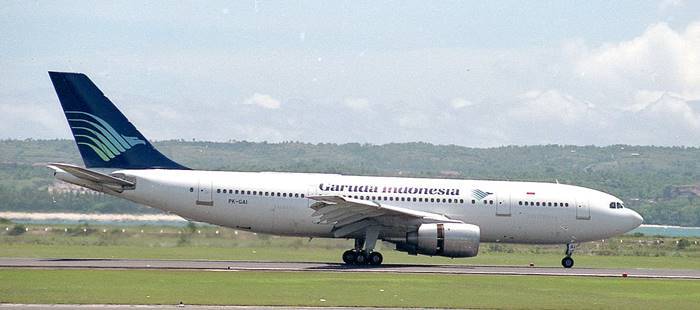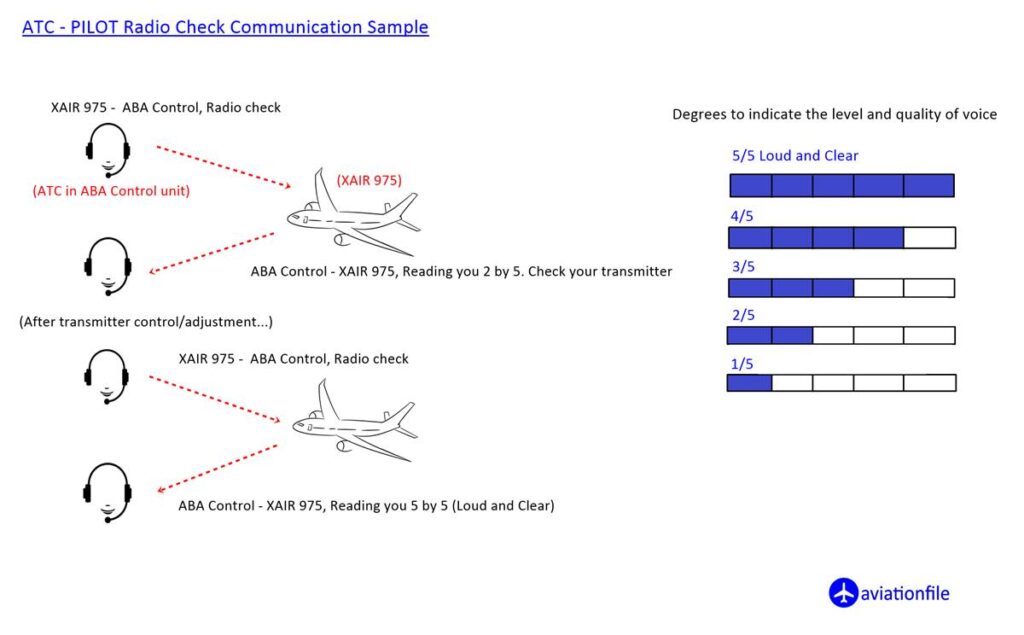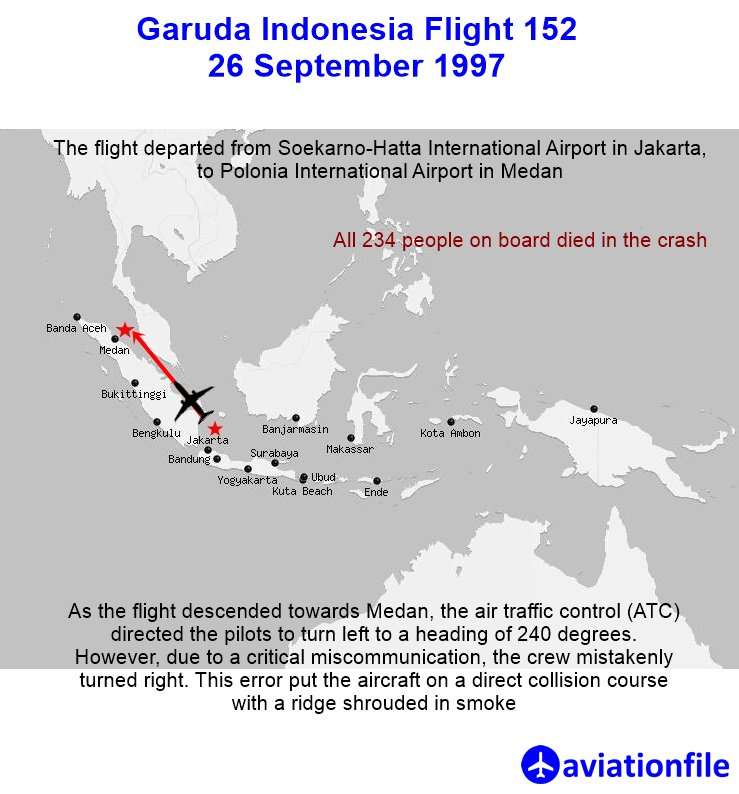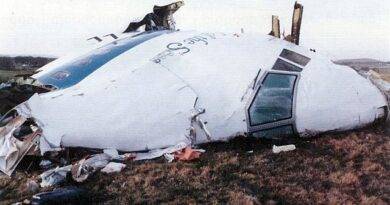Garuda Indonesia Flight 152 – 26 September 1997
On September 26, 1997, Garuda Indonesia Flight 152 tragically ended in disaster, becoming the deadliest aviation accident in Indonesia’s history at the time. The Airbus A300B4-220, on a domestic flight from Jakarta to Medan, crashed into a mountainous area near Medan, claiming the lives of all 234 passengers and crew (222 passengers and 12 crew members) on board.
The Flight’s Final Journey
The flight began routinely, departing from Soekarno-Hatta International Airport in Jakarta, bound for Polonia International Airport in Medan. As the aircraft approached Medan, weather conditions deteriorated rapidly. Thick smoke from widespread forest fires engulfed the region, severely reducing visibility and complicating navigation.
Aircraft Details
The aircraft involved in the Garuda Indonesia Flight 152 crash was an Airbus A300B4-220, a wide-body airliner known for its reliability in commercial aviation. It was registered as PK-GAI and had been in service since 1982, accumulating 26,950 flight hours. The A300B4 series, equipped with twin General Electric CF6-50C2 turbofan engines, was popular for medium to long-haul routes due to its efficient design. Despite its technical soundness, the crash underscored the importance of human factors in aviation safety, as the aircraft itself did not suffer from any mechanical failure.

Aircraft involved accident – Airbus A300B4-220 Reg: PK-GAI
source: Steve Knight – https://www.flickr.com/photos/kitmasterbloke/49080818238/
The Critical Error
As the Airbus A300 descended towards Medan, the air traffic control (ATC) directed the pilots to turn left to a heading of 240 degrees. However, due to a critical miscommunication, the crew mistakenly turned right. This error put the aircraft on a direct collision course with a ridge shrouded in smoke. The cockpit voice recorder later revealed that the pilots were uncertain about their exact position, adding to their disorientation.

The Fatal Crash
Realizing the mistake too late, the flight crew attempted to correct their course. At approximately 1:30 PM local time, the plane crashed into a ridge near Buah Nabar Village, roughly 29 kilometers from Medan. The impact was devastating, leaving no survivors among the 234 people on board.
Investigation Findings
The investigation into the crash uncovered multiple contributing factors. The primary issue was the miscommunication between the pilots and ATC. The thick smoke from the forest fires drastically reduced visibility, making it nearly impossible for the crew to rely on visual cues. The investigation also pointed to deficiencies in the crew’s situational awareness and decision-making during the crisis.
Lessons for Aviation Safety
The tragedy of Garuda Indonesia Flight 152 highlighted the crucial importance of clear communication and situational awareness in aviation. The disaster prompted improvements in air traffic control procedures and emphasized the need for enhanced pilot training, particularly in adverse weather conditions.

Conclusion
The crash of Garuda Indonesia Flight 152 remains a powerful reminder of the complexities and risks inherent in aviation. The lessons learned from this disaster continue to influence aviation safety practices, helping to prevent similar tragedies in the future.
References and Further Reading:
- https://en.wikipedia.org/wiki/Garuda_Indonesia_Flight_152
- https://tailstrike.com/database/26-september-1997-garuda-152/
- https://www.baaa-acro.com/crash/crash-airbus-a300b4-600-medan-234-killed
- Featured image source: tailstrike.com


